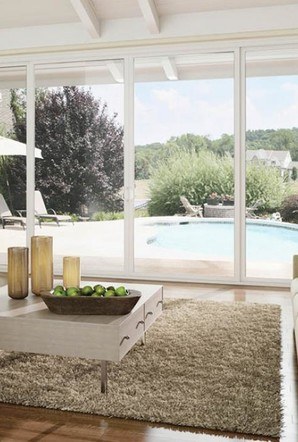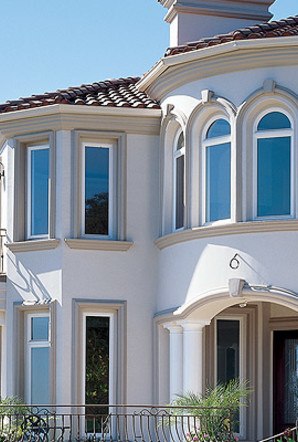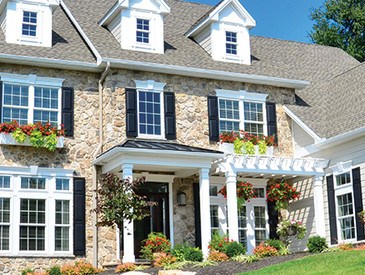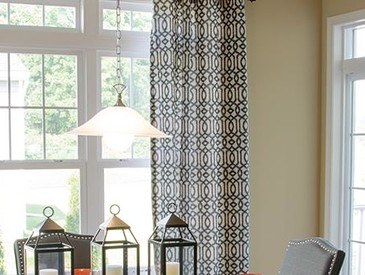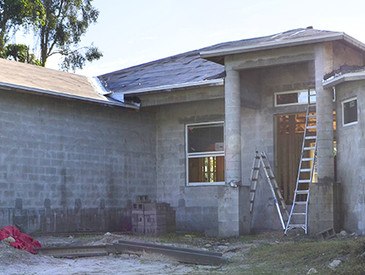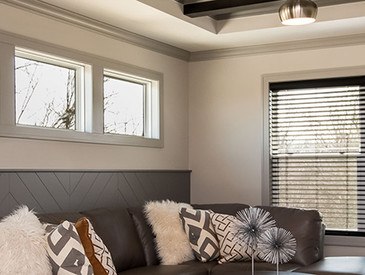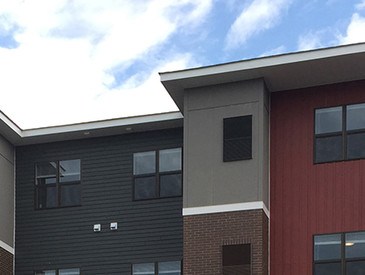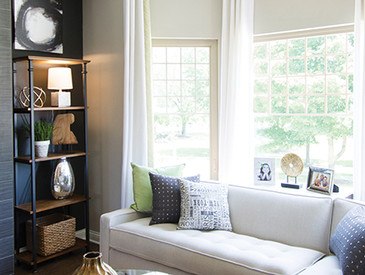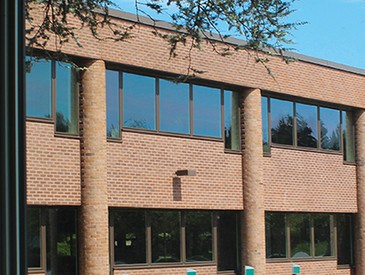We’ve all heard that “the eyes are the windows to the soul.” But when it comes to houses, we can change up that phrase: Your windows are the eyes of your home. They’re the first impression, the welcome mat, and the main event. They don’t just provide views and ventilation – they boost your home’s curb appeal and value, especially when they complement and enhance the architectural style.
If you’re looking to refresh and update your home while maintaining its distinctive design, read on for an overview of the most popular architectural styles and the windows that complement them.
Midcentury modern window styles
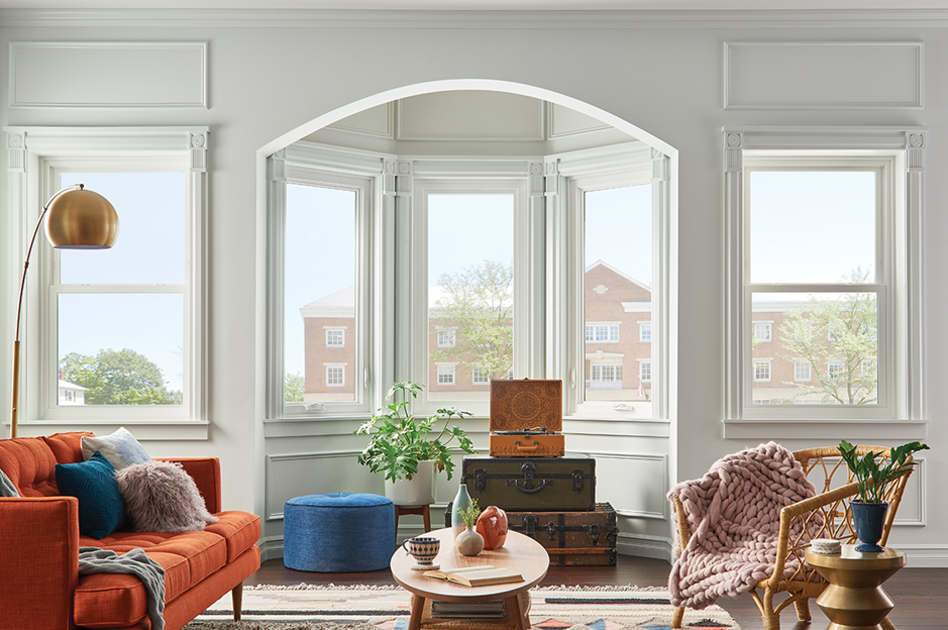
“Midcentury modern” is perhaps the most common phrase you’ll hear when discussing different architectural styles, but it’s a bit of a misnomer. That’s because it’s at least as popular today as it was when it was created in the 1950s and ’60s. Nevertheless, the term has held firm long into the 21st century, and it can refer to art, architecture, design, furniture, and more.
Midcentury Modern Décor
When it comes to home décor, midcentury modern refers to all kinds of charming accessories, like built-in bookshelves, standing hinged screens, and “starburst clocks” (i.e., clocks that resemble a star). If you really want the full midcentury look, you could also decorate your space with pop art, such as an Andy Warhol wall hanging or a print by Jasper Johns.
Midcentury Modern Architecture
Midcentury modern architecture is minimalistic, featuring clean lines, open floor plans, large numbers of windows, and a setting that integrates easily with nature. A perfect example is Frank Lloyd Wright’s Fallingwater (1935), the Pennsylvania summer home that boasts an immense, open living room in a house that’s suspended above a waterfall.
Midcentury Modern Windows
Midcentury modern window styles complement natural settings by helping to “bring the outside in,” dousing a home in natural light and dampening the divide between exterior and interior space. Windows are typically large and square to match the architecture’s clean, vertical lines, and do not have grids, so the view of the outdoors is seamless and clear.
Picture windows, casement windows, and large double hung windows are popular choices because they minimize rails, or the part of the window that separates each glass panel. Window trim and ornamentation is minimal to match the clean architectural style.
Glass walls are also common in midcentury modern houses; in fact, the Glass House (1949) by Philip Johnson and the Farnsworth House (1951) by Mies van der Rohe are two legendary examples of the glass wall aesthetic in midcentury modern architecture. Large sliding glass doors, sometimes called pocket glass walls, can also imitate this style.
Modern window styles
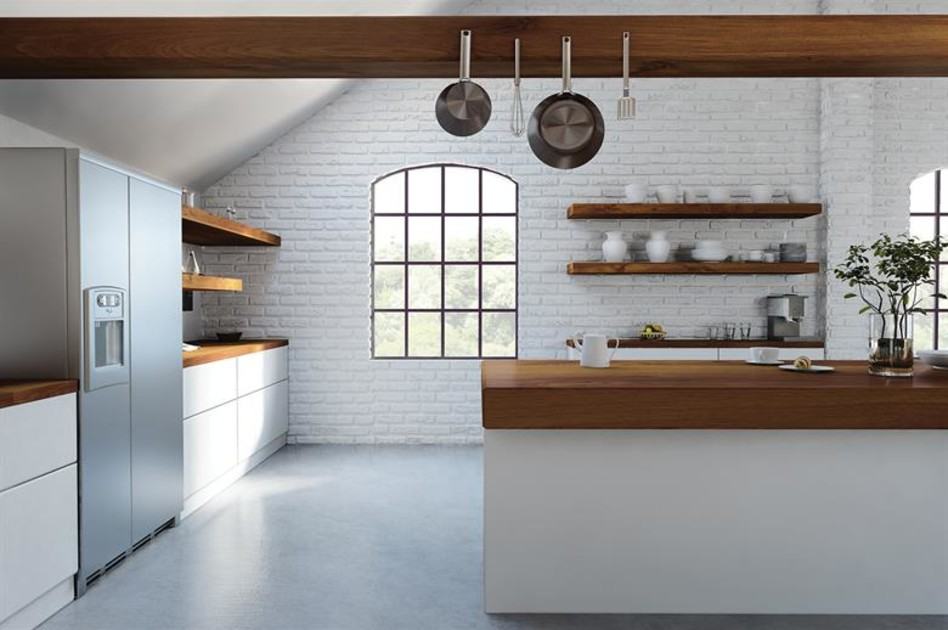
Television shows about entertainers, artists, and comedians epitomize the modern architectural style, which first became popular among artists in urban areas. Artists have repurposed former industrial buildings for decades, and today, the modern house style borrows from these original designs.
Modern Décor
Modern-style interiors are characterized by minimalism and a focus on open spaces and natural light. The color palette is typically neutral, featuring blacks, whites, and grays, complemented by bold primary colors used as accents. Furniture in modern homes features sleek, clean lines and often incorporates materials like steel, glass, and leather. Modern accessories include steel tools, cast iron decorations, and wooden bureaus and coffee tables.
Modern Architecture
Modern architectural styles shine in former buildings that were former factories or warehouses, giving them a loft-like feel, with large, open spaces serving multiple functions. When adapted to a residential home, this style features shallow-pitched roofs, geometric shapes, asymmetrical lines, and a combination of concrete, glass, and steel materials. The interior typically includes open floor plans, concrete floors, exposed brick, lots of steel surfaces, and support beams that would be covered up in most homes.
Modern Windows
Large, floor-to-ceiling designs are a hallmark of modern windows for a house, maximizing natural light and enhancing the indoor-outdoor connection. Sliding glass doors, casement windows, and picture windows are popular, maintaining clean, sleek lines associated with modern architecture. These windows typically don’t have grids, preferring large panes of glass that offer unobstructed views. Modern window trim is also minimalistic, and neutral colors like black, bronze, silver, or white are ideal.
Farmhouse style windows
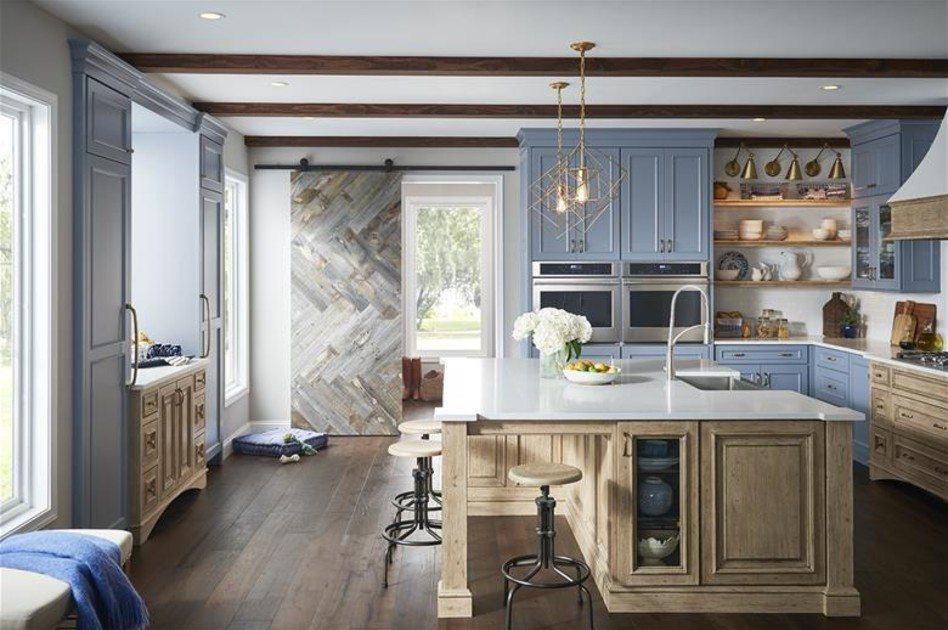
Although fewer than two percent of Americans live on a farm, farmhouse décor continues to earn acclaim, perhaps reflecting a desire for a simpler time. The farmhouse architectural style is rooted in practicality and simplicity, with functional spaces that cater to a busy, family-oriented lifestyle.
Farmhouse Décor
A core tenet of the farmhouse style is repurposing. Thus, a butter churn becomes an umbrella stand, glass milk bottles hold cooking spices, an antique tractor seat becomes a serving tray, etc. Most American antiques also fit in nicely with the farmhouse style. You can hang a cutting board on the wall or place an old sugar bowl on top of a shelf to get that desired effect.
Farmhouse Architecture
Farmhouse architectural styles imitate traditional farmhouses, with a straightforward rectangular shape, steep, shingled roofs, wrap-around porches, and wood siding painted white or left in a natural color. The style favors functionality over elaborate decoration, with any ornamental details usually restrained and purposeful, such as shutters or porch railings.
Farmhouse Windows
Farmhouse windows allow for maximum natural light and ventilation, enhancing the home's welcoming and airy feel. Double-hung windows are ideal for farmhouse-style homes, providing a classic look that is both functional and aesthetically pleasing. Casement windows are also popular, with their outward swinging design capturing the breeze and pairing well with the functional farmhouse style.
Farmhouse window frames are often black to contrast with the light-colored siding of the home. For your window grid, consider the Colonial pattern, which most resembles the traditional farmhouse look. Before it was possible to mass-produce windows and transport them without damage, manufacturers would make square panes of glass. Installers would then connect all the panes together in wooden mullions, which is why we associate that checkerboard grid pattern with the term “Colonial.”
Ranch style windows

Ranch-style homes are an all-American original and became incredibly popular during the suburban expansion of the 1950s and 1960s, appealing to the desire for spacious and informal living. Split-level style houses, which feature an entryway landing with stairs going up or down, emerged in the United States in the 1950s as a variation on Ranch-style architecture. Both of these architectural styles use similar décor and windows.
Ranch Décor
The interior décor of ranch and split-level homes is typically casual, with a focus on functionality and earthy color palettes that include browns, greens, and blues. Furniture is comfortable and low-slung, complementing the horizontal, stretched-out layout of the house. Furniture and finishes feature natural materials like wood, stone, and leather.
Ranch Architecture
Ranch style homes are defined by their long, low, and sprawling profile, often in a “U” or “L” shape. Key features include single-story construction, low-pitched gable roofs, attached garages, rambling layouts, and large windows. Split-level homes are a traditional rectangular shape with staggered floor levels, which are visible from the exterior, and attached garages with rooms above them.
Ranch Windows
Large picture windows and bay windows are a staple in ranch homes and also work in the upper levels of split-level homes. Ranch style windows have minimal grids to accent the architectural style’s clean, modern lines and provide natural light and unobstructed views. Sliding glass doors leading to patios or backyards are also common, emphasizing indoor-outdoor living. For smaller openings and on lower levels of split-level homes, double hung, sliding, and awning windows with simple grids are used.
Tudor and Victorian window styles
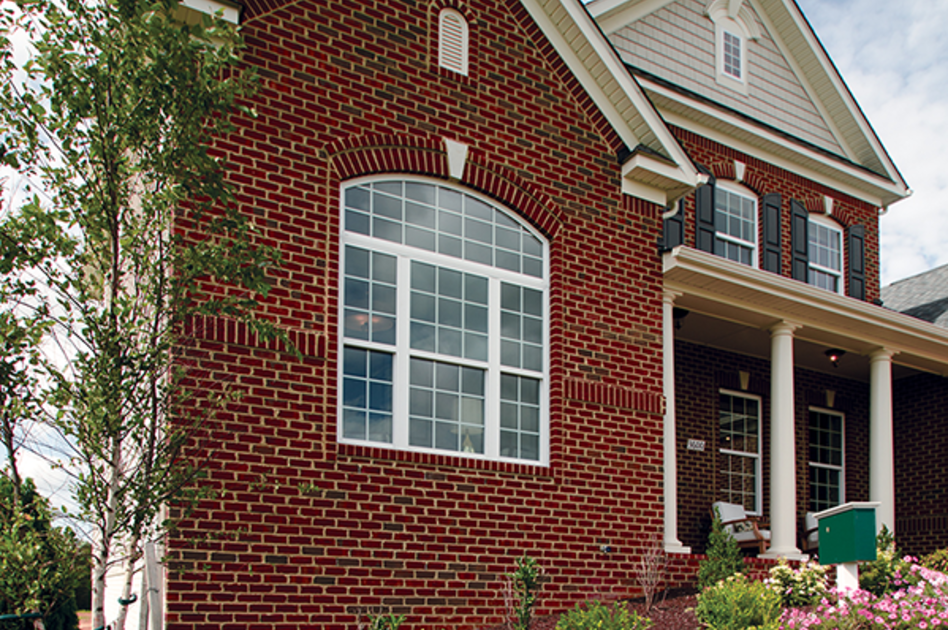
When you picture classic medieval cottages and manors, you’re probably thinking of Tudor architecture, which was popular in England from the late 1400s to around 1600. The Victorian style emerged in England during the reign of Queen Victoria, from 1837 to 1901, reflecting the affluence and innovative spirit of the era. Both architectural styles experienced a revival in the early 20th century in the United States and are common throughout the country.
Tudor and Victorian Décor
The interior decor of Tudor homes reflects their historical roots, featuring a warm, rustic charm that emphasizes comfort and craftsmanship. Large fireplaces, heavy fabrics, dark wood tones, and rich, deep color palettes create an intimate and cozy atmosphere that aligns with the exterior style.
Victorian interiors are characterized by layered textures and vibrant colors. From patterned wallpaper, carved furniture, and lace fabrics to elaborate displays of decorative knick-knacks, the spaces are filled with ornamental details that mirror the architectural complexity of the exteriors.
Tudor and Victorian Architecture
Tudor homes are easily recognized by their steeply pitched roofs, cross gable rooflines, exposed decorative timbering, high arched doorways, and tall, narrow windows. The facade often combines stucco around windows, plus brick and stone, creating a charming, rustic appearance.
Victorian homes are known for their elaborate and intricate details, with asymmetrical facades, wrap-around porches, and vibrant colors. Decorative trim known as "gingerbread" adorns many Victorian exteriors alongside patterned shingles and ornate gables.
Tudor and Victorian Windows
Both the Tudor and Victorian architectural styles are known for tall, narrow windows. Casement windows are the most traditional choice in Tudor homes, and can be grouped together to invite in more light. Window grids in the classic Tudor diamond pattern enhance historical appeal, but standard grids, also called Colonial grids, align with the overall architectural style.
Double hung windows and bay windows are popular for Victorian homes, offering panoramic views and an abundance of natural light. Standard or Colonial grids work well for these window styles, as well as ornate or colorful window glass and trim.
Mediterranean style windows
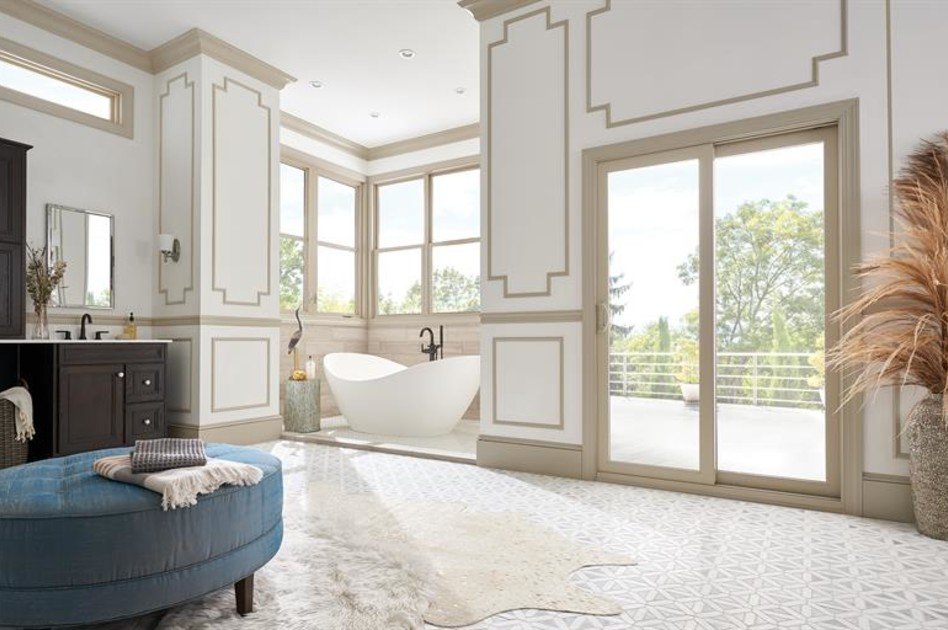
The Mediterranean house style originated in southern Europe, but it’s become quite common in the southern and southwestern United States. With its warm temperatures year-round, Southern California is ideal for Mediterranean homes, which first became popular in America during the 1920s as magazines and newsreels displayed the homes of Hollywood stars. One example is Greenacres, a legendary 1928 Beverly Hills home built in the Mediterranean style for silent film actor Harold Lloyd; it’s been on the National Register of Historic Places since 1984.
Mediterranean Décor
The Mediterranean architectural style is also sometimes referred to as Italian Renaissance or Spanish Modern, and it begs for a southern European motif. Homes are typically adorned with Greek pottery and wooden wall hangings. Additionally, it’s routine to place colorful, decorated mosaics on the floors – normally in soft colors like powder blue, mint green, or terra cotta.
Mediterranean Architecture
Mediterraneans are stucco-style houses that usually have one story. They feature red tile roofs, balconies, and arched doorways, windows, and arcades, with plenty of decorative tiles, exposed wooden beams, and wrought iron railings. Another important feature is that they’re designed to face and capture the breeze, with high ceilings and well-positioned doorways that enhance ventilation.
Mediterranean Windows
Mediterranean-style windows enhance the airy, open feel of the home and complement the intricate, luxurious, yet historical architectural details. Casement windows are fitting for Mediterranean homes as they can open fully outward to welcome in the breeze. Large picture windows and horizontal sliding windows are also appropriate, especially in areas overlooking gardens or courtyards. Better yet, sliding glass doors or moving glass walls provide the biggest viewing area and the most ventilation.
For your window grid, decorative iron grilles are the most traditional choice for this architectural style, but aren’t realistic for every homeowner due to cost or practicality. Standard or Colonial grids arranged in four, six, or nine panes per sash will also maintain a classic, authentic look and provide visual interest that complements the tiled roof and stucco walls.
Colonial and cape cod style windows
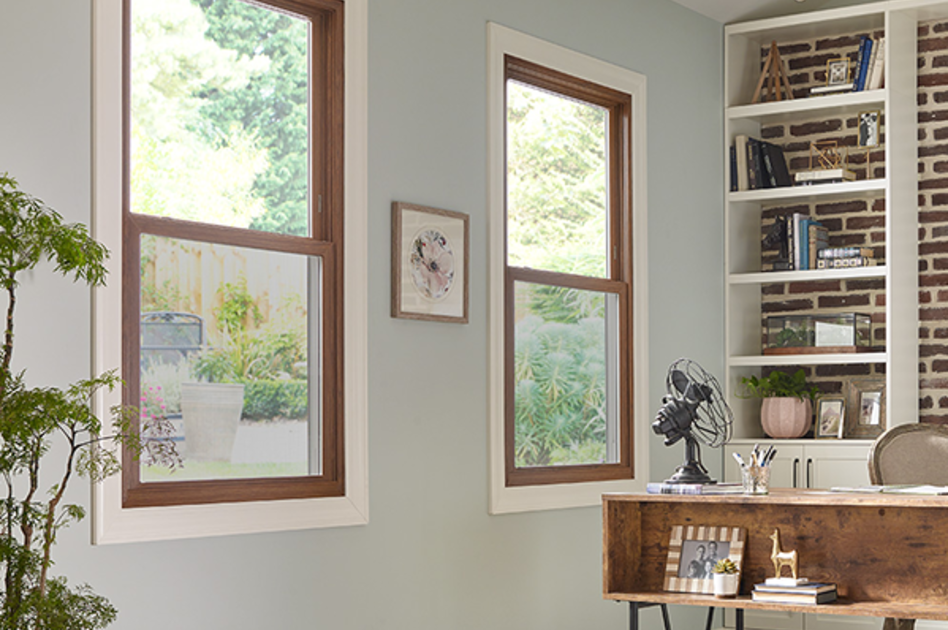
Colonial homes originated in the early 17th century, reflecting the architectural styles of European settlers who came to America. It was influenced by a range of styles, from Spanish colonial to French colonial, but British Colonial is among the most iconic and widespread.
Cape Cod-style homes are often considered a type of Colonial architecture. They also trace their origins to the 17th century, specifically in New England. This style saw a revival in the 1930s and spread throughout the United States, especially the East Coast.
Colonial and Cape Cod Décor
Both of these home interiors are typically cozy yet elegant, featuring natural wood accents, exposed beams, and muted, neutral colors that create a warm and inviting environment. Blues, greens, and soft reds are popular choices for both fabrics and paints, and furniture prioritizes comfort and practicality. Décor is a mix of antiques, reproductions, and nautical themes, with an emphasis on craftsmanship and heritage.
Colonial and Cape Cod Architecture
Colonial homes are characterized by their rectangular shape and balanced, symmetrical design. They typically have two or three stories, with gabled roofs and a prominent central door highlighted by decorative elements. The siding is brick or wood and may be painted white, and these homes almost always have a chimney. The main difference between the architectural styles is that Cape Cod homes have more steeply pitched roofs with side gables and dormers, and the siding may be wood shingles or clapboard.
Colonial and Cape Cod Windows
Both styles often feature double hung or single hung windows with multi-pane grids in six-by-six, nine-by-nine, or 12-by-12 patterns. Bay windows are also a popular choice for living areas, providing extra seating, natural light, and beautiful ocean views if you’re lucky enough to live in a truly traditional home by the sea. Windows are evenly spaced and symmetrical and often feature shutters, especially in coastal areas.
Discover the perfect windows for your home’s architectural style
Whether you like midcentury modern window styles, a cozy farmhouse or Cape Cod feel, or stately historical architecture, an experienced window professional can help make your vision a reality. Visit our Inspiration Gallery to spark your imagination, then get in touch with a Certified Dealer in your area. If you can dream it, MI Windows and Doors can make it happen.


















